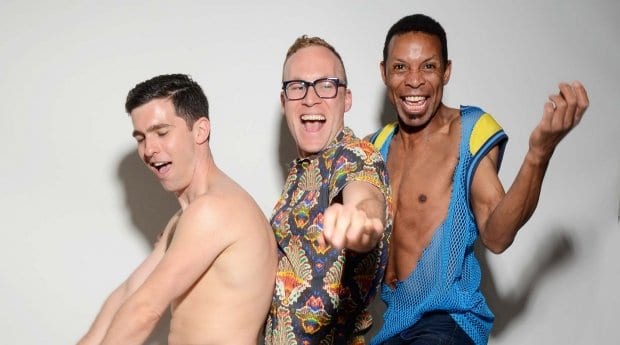When the news was announced that Fly nightclub would be closing after WorldPride this year, I clutched my pearls and let out a big “No!”
How could a “world class city” like Toronto lose its only official gay club? When cities like Hamilton and London, Ontario, are able to support gay venues filled with party-hungry queers, how is it that TO isn’t up to the task?
The questions and conversations continued with a few friend groups over the days and weekends that followed the announcement, but the talk always ended with us putting on our dancing shoes and heading to our favourite bar to dance until 3am.
I quickly realized that Fly’s closing actually has little or no effect on my life or on the lives of most gay people I know in Toronto. Don’t get me wrong; there’s nothing like an enormous space, filled with sweaty men dancing and having a great time with their hands in the air. I remember first walking into Fly when I landed in the city — it blew my mind. So many men! Such huge sound! So much room to dance and jump surrounded by giant inflated penises and over-the-top décor! I hope that every young gay person gets to experience a giant gay club. It’s an important step in one’s nightlife development.
But these clubs don’t mean much to me and never have. Give me a dancefloor the size of a postage stamp any day. Those tiny spaces are full of life and a kind of fearless abandon that big clubs seem to silence.
I grew up as a gay man dancing at Peroxyde, downstairs at Neutral in Kensington Market (remember that crazy aquarium?); Big Primpin’, at Stone’s Place; Hump Day Bump, at the Gladstone; and the tiny corners of The Barn for whatever was happening there that weekend. Hell, I had the most epic dance party of 2014 one night after the bar in my kitchen! (Never underestimate the value of raiding a fridge in the middle of a Beyoncé dance-off.)
As flamboyant as the mega-venues are, they’re going the way of the dinosaur for a reason — no one really cares. Big spaces along our waterfront and on the outskirts of the city have become the go-to places for weekend warriors who want to party in large spaces. And I don’t mind, do you? Does anyone?
As Rolyn Chambers and John Caffery — who are still heavily involved in the scene, and have been for years — both mention in stories in this issue, the trend is toward smaller spaces and parties. We can blame hook-up apps and ancient city bylaws, but we the party people of the city are the ones responsible, and that’s okay.
I recently DJed a party at Fly, to give all the west-end boys and fringe fags a chance to visit the club one last time — or, for many, for the first time ever — before the club closes its doors for good. About 70 percent of the crowd were regulars, 20 percent were revelling tourists, and a final 10 percent were just there to watch the live sex show that was promised. My DJ partner and I thought it would be a big draw to have one final blowout in the massive club that everyone loved or hated … turns out, not as many as we expected actually cared.
They’ll continue to dance at fantastic venues around the city that offer double the dancing for a lower price.
The gays of Toronto don’t require a club like Fly anymore because we’ve got more options than ever. We want variety, we want shows. We want to be shocked and entertained, but really, we just want to let loose and have fun. Smaller bars with dancefloors, while we can count them on both hands, are where it’s at!
Fly’s closing is sad, but the fact is, it’s a sign of the times, and these are good times to be dancing.
Phil Villeneuve is Xtra’s arts editor.


 Why you can trust Xtra
Why you can trust Xtra


